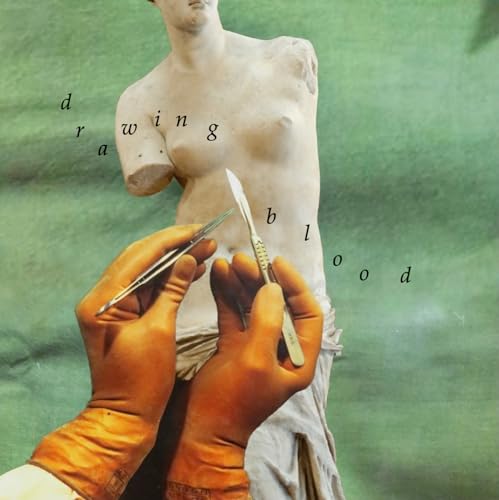In this episode, Emma and Christy look at the complex paintings of the Spanish-Mexican Surrealist painter Remedios Varo (1908-1963). During our conversation, we discuss female alchemists, artist’s studio-as-laboratory, science and occultism, the overlapping practices of spiritual and material transformation, Carl Jung and esotericism in psychoanalysis, the Fourth Dimension, ‘objective art’, and alchemical androgyny. CLICK HERE TO VIEW THE IMAGES WE DISCUSS, as well as complete show notes, references, and suggestions for further reading. WORKS DISCUSSED Remedios Varo, Useless Science, or The Alchemist [or, La Mujer Alquimista] (1955) Example illustration of a Rube Goldberg Machine (1931) Evelyn De Morgan, The Love Potion (1903) Remedios Varo, La Llamada (The Call) (1961) Remedios Varo, Creation of the Birds (1957) Albrecht Dürer, Saint Jerome in His Study (1514) Adriaen van Utrecht, Still Life with Parrot, or Allegory of Fire (1636) David Teniers the Younger, The Alchemist (1650) Kati Horna, Portrait of Remedios Varo in her Studio (with crystal on easel) (1963) Remedios Varo, The Juggler (The Magician) (1956) Remedios Varo, Woman Leaving the Psychoanalyst (Could Be Juliana) (1960) Marc Chagall, Homage to Apollinaire (1911-1912) Marcel Duchamp, The Bride Stripped Bare by Her Bachelors, Even (The Large Glass) (1915-1923) Remedios Varo, Harmony (1956) Example of an alchemical androgyne from Aurora consurgens (15th century) Remedios Varo, The Escape (1961) REFERENCES Caitlin Haskell and Tere Arcq, Remedios Varo: Science Fictions (New Haven: Yale University Press, 2023) Sven Dupré, Laboratories of Art: Alchemy and Art Technology from Antiquity to the 18th Century (London: Springer, 2014) Pamela Smith, ‘Laboratories’, in The Cambridge History of Science, vol. 3: Early Modern Science, ed. by Lorraine Daston and Katharine Park (Cambridge: Cambridge University Press, 2006), 289–305 Mary Anne Atwood, A Suggestive Inquiry into the Hermetic Mystery (Edinburgh: William Tait, 1918 [1850]) Pamela Thurschwell, Literature, Technology and Magical Thinking, 1880–1920 (Cambridge University Press, 2001) Carl Jung, On the Psychology and Pathology of So-Called Occult Phenomena (1902) Carl Jung, Psychology and Alchemy (London: Routledge, 1980 [1944]) Linda Dalrymple Henderson, The Fourth Dimension and Non-Euclidean Geometry in Modern Art (Boston: MIT Press, 2018) Charles Howard Hinton, The Fourth Dimension (London: George Allen, 1912) George I. Gurdjieff, In Search of Being: The Fourth Way to Consciousness, ed. Stephen A. Grant (Boulder, CO: Shambhala, 2021) Salomon Trismosin, Splendor Solis (1582) FURTHER READING Tere Arcq, ed., Five Keys to the Secret World of Remedios Varo (Mexico City: Artes de México, 2008) Micah James Goodrich, ‘Trans Animacies and Premodern Alchemies’, in Medieval Mobilities: Gendered Bodies, Spaces, and Movements (London: Springer, 2023) Emma Merkling, ‘Physics, Psychical Research, and the Self: Evelyn De Morgan’s Spiritualist Portraits’, Art History 46.3 (2023): 458–83 You can read more about Emma’s project on alchemy here! Mark Morrisson, Modern Alchemy: Occultism and the Emergence of Atomic Theory (Oxford: Oxford University Press, 2007) Ricardo Ovalle, et al., Remedios Varo: Catálogo Razonado / Catalogue Raisonné (Mexico City: Ediciones Era, 1994) Lawrence M. Principe, ‘Alchemy I: Introduction,’ in Dictionary of Gnosis & Western Esotericism (London: Brill, 2005), 12-16 Arturo Schwarz, ‘Alchemy, Androgyny and Visual Artists,’ Leonardo 13, no. 1 (Winter 1980), 57-62 Pamela Smith, The Business of Alchemy: Science and Culture in the Holy Roman Empire (Princeton, N.J. : Princeton University Press, 1994) Remedios Varo, Letters, Dreams, and Other Writings, trans. Margaret Carson (Cambridge, MA: Wakefield Press, 2018)
Más
Menos
 1 h y 3 m
1 h y 3 m 1 h y 2 m
1 h y 2 m 1 h y 2 m
1 h y 2 m 30 m
30 m 56 m
56 m 1 h y 3 m
1 h y 3 m Jul 26 20231 h y 5 m
Jul 26 20231 h y 5 m Mar 6 2023Menos de 1 minuto
Mar 6 2023Menos de 1 minuto
